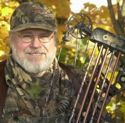A still afternoon is the ideal time to enjoy a few hours in the woods squirrel hunting.
The season will be over soon, so don’t pass up the opportunity, especially when temperatures moderate. There are plenty of squirrels in Kentucky’s woodlands, and bag limits are generous.
Kentucky’s fall 2016-17 squirrel season ends Feb. 28. The daily bag limit is six squirrels.
The gray squirrel is the dominant species in the heavily-forested eastern third of Kentucky, with a higher percentage of fox squirrels in the small woodlots and wooded fencerows of agricultural areas in Central and Western Kentucky. Squirrels are the most stable and abundant small game species in Kentucky. Local populations go up and down from year-to-year, based on food availability.

There’s a higher percentage of fox squirrels in the small woodlots and wooded fencerows of agricultural areas in Central and Western Kentucky. (Photo Provided)
The fall squirrel season is one of the longest on the state’s annual hunting calendar, 191 days this season, with hunting in parts of seven months.
The last month of the season offers good hunting opportunities, but hunter participation and squirrel harvest, wanes. A proven late season hunting strategy is to walk awhile, then sit awhile, and wait for squirrels to appear. Take along some binoculars to look for movement.
Shots tend to be longer, so .22 rifles and small-caliber muzzleloaders are ideal for bagging squirrels in late season.
On still days, hunters will be able to hear better. Squirrels are noisy, even in the winter, barking and chattering, and chasing each other.
Squirrel hunting during the last month the season is a much different experience than hunting during late summer and early fall. In August and September, the leaves are still on the trees. Hickory nuts, oak acorns, beechnuts and walnuts are just starting to ripen. Squirrels frolic through the leafy treetops, and the spot and stalk method is the best hunting strategy.
Shotguns are ideal for the early season because squirrels are in thick foliage and partially hidden most of the time.
In winter, the food that squirrels are looking for is mostly on the ground, usually the last remaining walnuts and red oak acorns. Food is in short supply, and there’s competition from deer and wild turkeys.
For more outdoors news and information, see Art Lander’s Outdoors on KyForward.
In winter, squirrels go back to the cache of nuts and seeds they have buried or stashed in tree cavities, so hunting around old den trees is one strategy option. Another is to key on remaining food sources.
Kentucky had a big mast crop last fall, so there’s still plenty of food available to squirrels. This will ensure a high survival rate through the winter, with an excellent reproductive outlook.
Squirrel harvest drops off in the late season in part because there are fewer hunters. Years of data from the Squirrel Hunter Cooperator Survey has found that hunter effort is greatest toward the beginning of the fall season and declines as the season progresses.
Most years less than five percent of squirrel hunts are during the last two months of the season. Hunters typically observe about half as many squirrels in late season, compared to August and September.
Don’t overlook late season squirrel hunting. It’s a Kentucky tradition and hunting season’s last hurrah.
Art Lander Jr. is outdoors editor for NKyTribune and KyForward. He is a native Kentuckian, a graduate of Western Kentucky University and a life-long hunter, angler, gardener and nature enthusiast. He has worked as a newspaper columnist, magazine journalist and author and is a former staff writer for Kentucky Afield Magazine, editor of the annual Kentucky Hunting & Trapping Guide and Kentucky Spring Hunting Guide, and co-writer of the Kentucky Afield Outdoors newspaper column.























